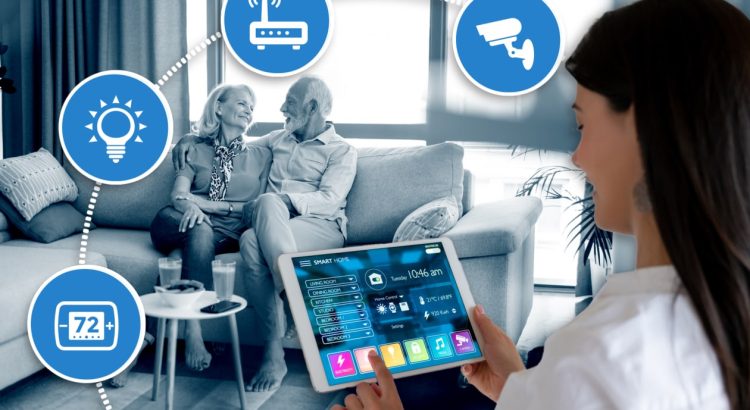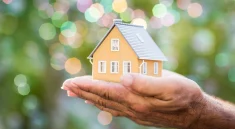ABC del Bienestar – In an era where technology is advancing at lightning speed, the way we think about aging and care for the elderly is undergoing a dramatic shift. Forget everything you knew about traditional retirement homes. The real revolution is happening inside the walls of smart homes for seniors, where independence, comfort, and safety are redefined by cutting-edge innovations. From AI-powered monitoring systems to voice-activated lighting and appliances, smart living is no longer a futuristic dream—it’s a present-day solution transforming how we age.
The Rise of Smart Homes for Seniors
As populations across the globe age, there’s an increasing demand for environments that support aging in place. The concept of smart homes for seniors answers this call, offering older adults the ability to live independently while staying connected to caregivers and family members through intelligent home systems. With sensors that detect falls, appliances that remind users to turn off the stove, and doors that unlock via voice, these homes offer peace of mind while maintaining dignity.
What once required human oversight can now be managed seamlessly through smart technology. Smart homes for seniors reduce the need for institutional care, allowing elderly individuals to remain in familiar surroundings while still receiving the assistance they need through automation and remote monitoring.
Empowering Independence Through Technology
One of the biggest advantages of smart homes for seniors is the promotion of personal independence. Voice-controlled assistants like Amazon Alexa or Google Home can help seniors control their environment without needing to move around. Whether it’s adjusting the thermostat, turning on lights, or playing music, simple commands now provide big comfort. The integration of these devices makes smart homes for seniorsnot just livable, but empowering.
Safety Features That Make a Difference
Safety is one of the core features that make smart homes for seniors so revolutionary. Fall detection sensors, smart surveillance systems, and emergency response buttons are all built-in features that act as silent guardians. In the case of a fall or unusual inactivity, alerts are instantly sent to caregivers or emergency services.
Lighting systems that automatically adjust at night help prevent trips and stumbles. Smart locks offer keyless entry for trusted family or care providers, eliminating the risk of lost keys. These features make smart homes for seniors the ideal alternative to traditional eldercare institutions, where such technology may be limited or shared across many individuals.
Health Monitoring Without Leaving Home
Telehealth integration is a game-changer in smart homes for seniors. This seamless communication reduces the need for frequent hospital visits and allows medical professionals to act proactively.
Smart toilets are even entering the scene, analyzing waste to detect early signs of illness. Smart mirrors can guide users through physical therapy routines, while wearable health trackers provide constant biometric feedback. By combining all these tools under one roof, smart homes for seniors ensure ongoing care without disruption to daily life.
Emotional Wellbeing and Social Connection
Loneliness is a growing concern among aging populations, but smart homes for seniors are bridging that gap through tech-enabled social connection. Video calling systems built into TVs or dedicated tablets allow seniors to connect with loved ones or join community events without the need for travel.
AI companions are also evolving to offer mental stimulation, reminders, and even friendly conversations. These advancements foster emotional wellbeing, making smart homes for seniors environments where both mind and body are cared for.
Affordability and Customization Options
Contrary to common belief, smart homes for seniors are becoming increasingly affordable. Modular kits and customizable packages allow families to tailor the technology to specific needs and budgets. From basic motion sensors to full smart home ecosystems, there’s a solution for every household.
This flexibility also allows for incremental upgrades. Start small with a few smart plugs or a voice assistant, and expand as needs change. The accessibility of these options means that transforming a standard home into a smart home for seniors is more attainable than ever.
Why This Isn’t Just a Trend—It’s a Movement
What we’re seeing with smart homes for seniors is not just a passing trend—it’s a cultural and technological movement. As more families prioritize independence, dignity, and comfort for their aging loved ones, the demand for smart solutions will only grow. Governments and tech companies alike are investing heavily in this space, recognizing its power to ease healthcare burdens and improve quality of life.
Tech giants are even developing senior-specific platforms that simplify interfaces, making them intuitive and user-friendly.
Looking Ahead: The Future of Aging Is Now
The transformation brought about by smart homes for seniors is just beginning. As AI becomes more predictive, homes will anticipate needs before they arise. The line between caregiver and home will blur, resulting in a supportive, invisible network of care.
Rather than fear old age or depend solely on traditional care facilities, seniors today and tomorrow can look forward to a future where their home is not just a place of rest—but a hub of empowerment, care, and connection. Indeed, smart homes for seniors are not just the future—they are the now.
What This All Means for the Future of Elderly Living
The shift from traditional eldercare to smart homes for seniors is not simply about convenience—it’s a powerful transformation of lifestyle, independence, and dignity. With each innovation, we move closer to a world where aging in place is not only possible, but preferable. The smart revolution is here, and it’s time to embrace the home as the future of eldercare.



